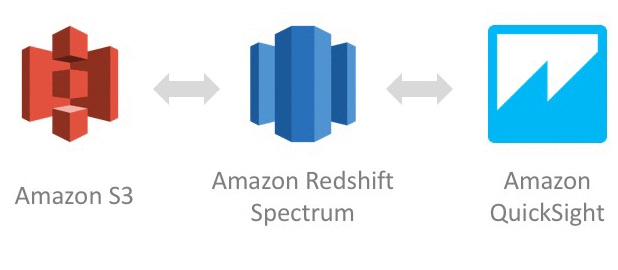AWS Big Data Blog
Amazon QuickSight Adds Support for Amazon Redshift Spectrum

In April, we announced Amazon Redshift Spectrum in the AWS Blog. Redshift Spectrum is a new feature of Amazon Redshift that allows you to run complex SQL queries against exabytes of data in Amazon without having to load and transform any data.
We’re happy to announce that Amazon QuickSight now supports Redshift Spectrum. Starting today, QuickSight customers can leverage Redshift Spectrum to visualize and analyze vast amounts of unstructured data in their Amazon S3 data lake. With QuickSight and Redshift Spectrum, customers can now visualize combined data sets that include frequently accessed data stored in Amazon Redshift and bulk data sets stored cost effectively in S3 using the familiar SQL syntax of Amazon Redshift.
With Redshift Spectrum, you can start querying your data in Amazon S3 immediately, with no loading or transformation required. You just need to register your Amazon Athena data catalog or Hive Metastore as an external schema. You can then use QuickSight to select the external schema and the Redshift Spectrum tables—just like any other Amazon Redshift tables in your cluster―and start visualizing your S3 data in seconds. You don’t have to worry about scaling your cluster. Redshift Spectrum lets you separate storage and compute, allowing you to scale each independently. You only pay for the queries that you run.
Redshift Spectrum support is now available in these QuickSight regions – US East (N. Virginia and Ohio), and US West (Oregon).
To learn more about these capabilities and start using them in your dashboards, check out the QuickSight User Guide.
If you have questions and suggestions, post them on the QuickSight Discussion Forum.
Not a QuickSight user? Get started for FREE on the QuickSight page.